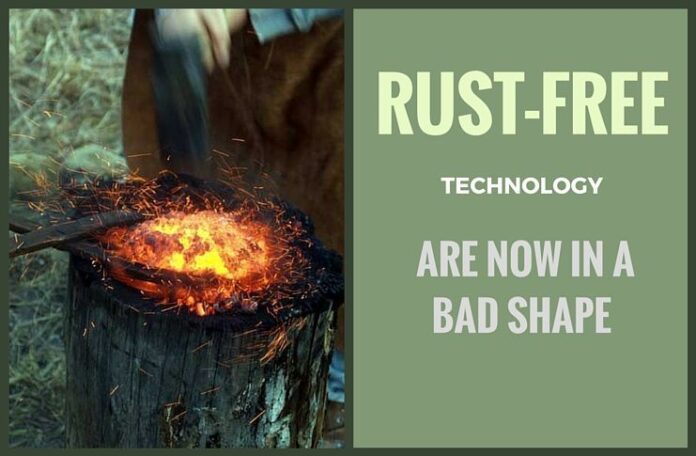
[dropcap color=”#008040″ boxed=”yes” boxed_radius=”8px” class=”” id=””]T[/dropcap]here was a time when the smelting of iron was the primary source of livelihood of the Asuras, a primitive tribe of Jharkhand. But now, state apathy, introduction of modern technology and implementation of the government’s forest conservation policy have spelt doom for the traditional methods employed by the tribe.
The iron made by the tribe was said to have anti-rust properties and the processes are much safer, cheaper and eco-friendly. But with the passage of the time, iron smelting became secondary for the Asuras, as they had to look for alternative means of livelihood.
“The Asuras, who revealed to us the rust-free technology are now in a bad shape. There are many reasons for this, including introduction of modern iron technology and implementation of government’s forest conservation policy,” Ashish Sinha, a researcher on the Asura tribe, told IANS.
“These have given a huge blow to their iron making traditions, which were earlier not only their source of livelihood but a part of their culture and tradition, which is now on the verge of extinction,” Sinha added.
The Asuras prepared charcoal from the dead ‘sal’ wood found on the banks of rivers or tanks and used it to smelt iron ore for preparing iron tools there are three varieties of iron ore recognised by the Asura tribe in the Netharhat plateau.
[dropcap color=”#008040″ boxed=”yes” boxed_radius=”8px” class=”” id=””]O[/dropcap]ne is magnetite which is called POLA, second is Haematite known as BICHI and third one is Haematites from Laterite known as GOTA. The Asuras followed a unique method of making iron. The ancient processes make use of two distinct types of furnaces in their operation, which differ in their physical form. The basic principle of operation similar for both.
The first is a shaft furnace and is fully subterranean while the second is partly subterranean and constructed over a rectangular pit.
These furnaces are about 30 inches high and their bottoms are concave, while the cylindrical furnace shafts rise up as chimneys. The furnaces are built of ordinary clay. The charge, comprising iron ore and charcoal, is fed into the shafts. One clay pipe is inserted through a parabolic opening in the bottom of the furnace which acts as a tuyere – a tube through which air is blown into the furnace. The opening through which the tuyere is introduced is sealed with clay.
According to anthropologists, Asuras were among the Proto-Australoid
groups inhabiting what is now Jharkhand and the western region of West Bengal. They figure in the Rigveda, Brahamanas, Aranyakas, Upanishadas and Epics which comprise the sacred literature of the Hindus.
[dropcap color=”#008040″ boxed=”yes” boxed_radius=”8px” class=”” id=””]T[/dropcap]here is a popular belief that the Asuras are the descendants of Mahishasur (a demon king). The people from the tribe are now mostly found in Gumla, Latehar, Lohardaga and Palamu district of Jharkand and in North Bengal (Alipurduar).
“The ban on forest wood, which is one of the primary source of making traditional iron hampered their work. Large sections of our society moved towards agrarian society in search of livelihood” said tribal elder Rambriksh Birjia (66).
The state government, for the first time, has recognised the importance of the Asura tribe by selecting the theme of iron smelting for its tableau to be showcased during the January 26 Republic Day parade next year.
“The state government’s theme for the Republic day tableau is Make in India, which depicts how Jharkhand transformed from iron smelting of Asura tribe to big steel plants like Tata steel, Bokaro steel and other steel plants established in the state. We have successfully cleared four stages of clearances with the government of India for the Republic Day parade,” Jharkhand Information and Public Relations Department Director A.K. Pandey told IANS.
Tableaux are fine, but the Asuras need a lot more to be done for them if they are to survive.
Note:
1. Some of the content is from IANS
- Pentagon cancels aid to Pakistan over record on militants - September 2, 2018
- The curious case of Tamil Nadu’s opposition to NEET - September 4, 2017
- If 2.6 Billion People Go To War: India vs. China - July 22, 2017










